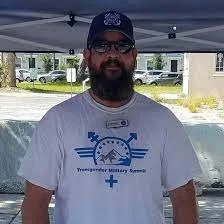Serving with Pride: Understanding LGBTQIA+ Veterans
By Zander Keig

Lesbian, gay, bisexual, transgender, transsexual, and queer (LGBTQIA+) individuals who have honorably served in the United States military are Veterans. We have served in every military branch, under various legal policies, and during every Service Era.
LGBTQIA+ Veterans represent every race, ethnicity, religion, socio-economic class, and political affiliation. We come from urban, suburban, and rural areas, making us an extraordinarily diverse group. What we have in common is a desire to serve our country with distinction and honor.
For those of us who served before the Don’t Ask, Don’t Tell (DADT) policy went into effect (February 28, 1994), we risked being dishonorably discharged if our sexual orientation or gender identity were discovered.
Although there was an extra layer of protection for those serving under the DADT policy (February 28, 1994, to September 20, 2011), it did not prevent LGBTQIA+ individuals from being less-than-honorably or dishonorably discharged or administratively separated if their sexual orientation or gender identity was discovered.
Those who served after the DADT policy was repealed (September 20, 2011) have enjoyed the ability to disclose and celebrate their sexual orientation if they so choose. However, the level of acceptance and belonging can vary by branch and command.
Transgender Veterans who served during the first Open Transgender Service policy (2016-2019) and those currently serving under the current policy (2021-present) have had access to TRICARE-covered gender-affirming care, including hormones, surgeries, and the ability to update military records (DEERS) with a new legal name and sex marker (gender).

The appearance of U.S. Department of Defense (DoD) visual information does not imply or constitute DoD endorsement.
Those dishonorably discharged before the repeal gained access to correcting their military records to reflect an honorable discharge. They are also now eligible to apply for VA benefits, which would otherwise be withheld due to the character of the discharge.
According to the Department of Veterans Affairs, “Studies have shown that LGBTQ+ Veterans are at an elevated risk for stress” and that “stress can increase the risk for certain mental and physical health conditions, such as substance use disorders, anxiety, and depression.” In addition, these stresses are “more prevalent in the LGBT[QIA+] population than in the non-LGBT population.” Many Veterans experience a decrease in social support, and the VA found that “decreased social support were found to be particularly relevant risk factors for suicidal thoughts and behaviors among LGBT[QIA+] Veterans.”
Over the years, LGBTQIA+ Veterans and service members have organized open and closed social networks for support and connection. Following is a list of some of those organizations.
American Veterans for Equal Rights (AVER) is the oldest Lesbian, Gay, Bisexual, and Transgender (LGBTQIA+) Veterans Service Organization (VSO) in the United States. Founded in 1990, AVER is a non-profit VSO that supports and advocates for the rights of LGBTQIA+ military Veterans, active duty service members, and their families.
OutServe, founded by a 2009 US Air Force Academy graduate, had over 7,000 members and 80 chapters worldwide before it merged with the Servicemembers Legal Defense Network (SLDN) in 2012. Then, in 2019, OutServe-SLDN merged with the American Military Partner Association (AMPA) to form the Modern Military Association of America (MMAA).
Transgender American Veterans Association (TAVA) is an advocacy group for transgender Veterans from the US military. It was founded in 2003 by former Navy and US Army servicepersons. One of its founders, Monica Helms, designed the Trans Pride Flag on display at the Smithsonian National Museum of American History.
SPARTA is a nonpartisan organization committed to ensuring the rights and opportunities of all transgender service members and aspiring transgender recruits are protected. SPARTA is committed to equal opportunity for all service members regardless of race, national origin, religion, sex, sexual orientation, and gender identity and expression.
Minority Vets of America (MVA)—MVA is building an intersectional movement of minority veterans and allies. It advocates equity, respect, and justice for all Veterans. It's creating community among its members and delivering culturally informed programming.
The camaraderie many Veterans experience during their time on active duty often leads them to seek out or develop social networks (i.e., Amvets, Veterans of Foreign Wars). Still, too frequently, those networks may not be open to LGBTQIA+ people. For example, after DADT was lifted and when same-sex marriage was legal in all fifty states (2015), the partners and spouses of LGB active duty personnel were not welcome to join the National Military Spouse Network, so they formed the American Military Partner Association.
As a Mexican-American trans man Veteran who served honorably in the US Coast Guard in the 1980s, I look back on my service with both pride and frustration. It was an honor to serve my country, and the challenges I faced as a result of being a closeted lesbian at the time made my experience one that was less enjoyable and, at times, challenging.
Thankfully, I rebounded into a career as a Licensed Clinical Social Worker and ultimately ended up serving the Veteran community by working at the Department of Veterans Affairs in the Healthcare for Homeless Veterans Program (2012-2016) and with the Department of Defense as the first appointed member of the Navy Medicine West Transgender Care Team during the Trump Administration (2016-2019).
In understanding the journey of LGBTQIA+ Veterans, it's essential to recognize the diversity within our community and the challenges we've overcome in service to our country. I invite you to explore the resources listed above to learn more about the experiences of LGBTQIA+ Veterans. Becoming more informed is how we continue to show support and honor the legacy of all Veterans.